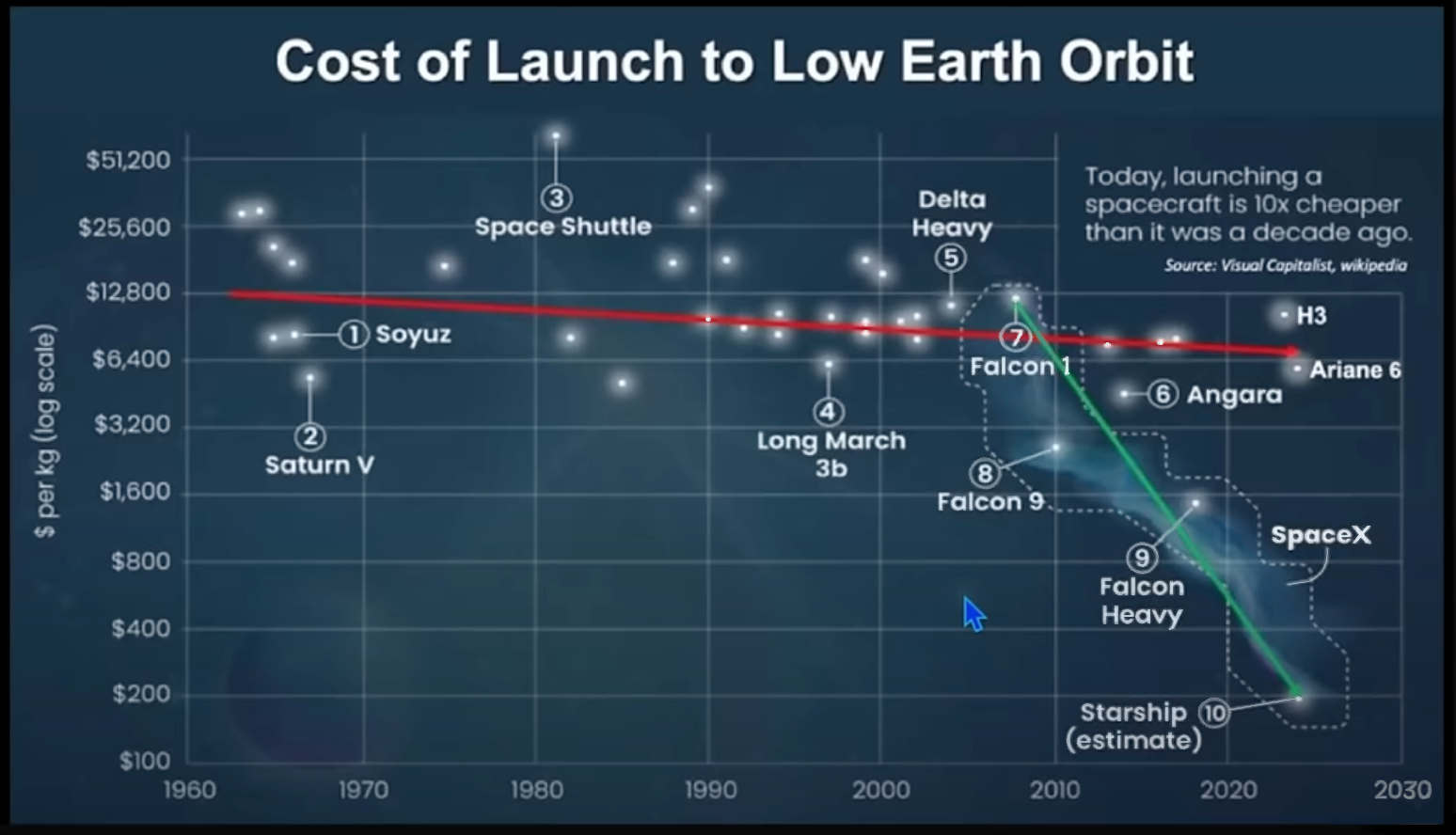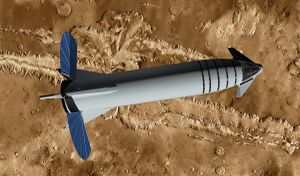Space access
Space access is the ability for persons to leave a planet's surface. This page is an introduction on basic principles and technology of getting from the Martian surface to an orbit or into free space.
Contents
Motivation
A human colony on Mars can be established with or without space access. The fight against the gravitational pull requires large amounts of energy. Since the gravity of Mars is smaller than Earth' and the atmosphere is thinner, space access is easier. However, the energy resources of such a colony are limited. Using parts of the available energy for space access could be thought to reduce other project's progress. However, space access is required for return to earth, and is likely to be part of any human occupied flights to Mars.
However, space access for a martian settlements also means that there is a way to return the transportation vehicle back to Earth and re-use it. This will greatly reduce the cost of transportation from Earth to Mars. This is the In-situ resources paradigm.
Beyond returning the transportation vehicles back to Earth for re-use, Assuming the colonists went to Mars to stay there and build their own civilization, there still might be some additional tasks to do:
- Trips to Low Mars Orbit and possible space stations residing there for scientific reasons.
- Trips to Phobos and Deimos for scientific and mining reasons.
- Ferry persons to and from space craft that have arrived from, or are heading for, Earth, or other celestial bodies. For example, the Mars cycler concept.
- Possible satellite repair, not a dissimilar task as to what was imagined for the space shuttle in the 1970's.
DeltaV and energy
The deltaV to orbit for Mars is about 3,8 km/s. For Earth, taking into account atmospheric friction the deltaV is about 9.3 to 10 km/s. Using the rocket equation Δv=ve*ln(Mo/Mf) or Mo/Mf= e(Δv/ve) we can see that the mass fraction of propellant to reach orbit is much lower for Mars than for Earth. For example with Methane and Oxygen propellant, the exhaust velocity (ve) is about 3400m/s, so for Mars the mass ratio is 3, while for Earth it is between 15 and 19. So it is at least five times easier to leave Mars than it is to leave Earth.
Cost to orbit
The cost of space flight is a key concept. This is often measured as the cost to lift a kilogram into Low Earth Orbit (LEO). This cost has declined slowly for the last few decades, tho SpaceX has made this significantly lower by creating reusable rockets with a short turn around time.
Note that the space shuttle was supposed to greatly lower the cost to reach space, but it failed. It was not really 'reusable' but rather 'refurbisable' taking months to inspect, repair, refurbish before it could launch again. Worse this took a team of hundreds of people. It ended up being one of the most expensive launchers.
Cost to LEO is arguably the most important contributor to space access for people. If the cost to reach space is hundreds of thousands of dollars, very few people will go. If the cost drops a hundred fold, then more opportunities open up, both recreational and economic.
Conventional rocket crafts
The craft should be:
- Reusable
- Single Stage to Orbit (SSTO) ot two stage to orbit (TSTO).
- Use propellants that can be obtained from Mars.
- Able to share components with other machines
It has proved very difficult to build an SSTO launcher on Earth, but the lower Martian gravity would be of assistance to any launching spacecraft. If the craft uses multiple stages, these will all have to be recovered separately, which complicates the process of reuse. SpaceX has proposed a combination vehicle that is SSTO on Mars, but TSTO on Earth. The combination of Starship and Falcon super heavy, or Booster.
Hydrogen, methane and oxygen propellants can be obtained from Martian ice. The attitude control thrusters could use gaseous oxygen and methane, kept under pressure.
Early landers will probably be non-reusable or only partially reusable. The descent stages of these landers could be dismantled and reused.
The guidance systems on the lander need not be hi-tech. The Apollo spacecraft flew to the Moon using less computing power then a pocket calculator. However, due to the many variables in a landing sequence and the availability of technology low tech solutions are very unlikely and don't offer any significant advantages.
However, precise landing to a dedicated landing pad will require advanced adaptive control techniques, as otherwise the probable landing area is measured in tens to hundreds of km2
Speculative concepts
- Supersonic in ground effect may be used for a winged shuttle even in the thin Martian atmosphere to help reduce costs.
- A space elevator is an interesting alternative both for Luna and Mars. Probably, it allows even more cost reduction. However, Phobos' orbit may intersect the path of a martian space elevator.
- A mass driver is powered electrical and requires no chemical propellants. While on Earth this would not work for lifting people to orbit, the conditions of Mars might allow it. However a mass driver capable of sending payloads into orbit is a large infrastructure.
- A Sky ramp on Mars would allow inexpensive and high thru-put single stage to orbit vehicles.
- Chemical propellants on Mars will be produced by solar arrays or nuclear reactors, through the electrolysis of water. So chemical propulsion on Mars is actually electrical in nature and ultimately solar or nuclear powered.









